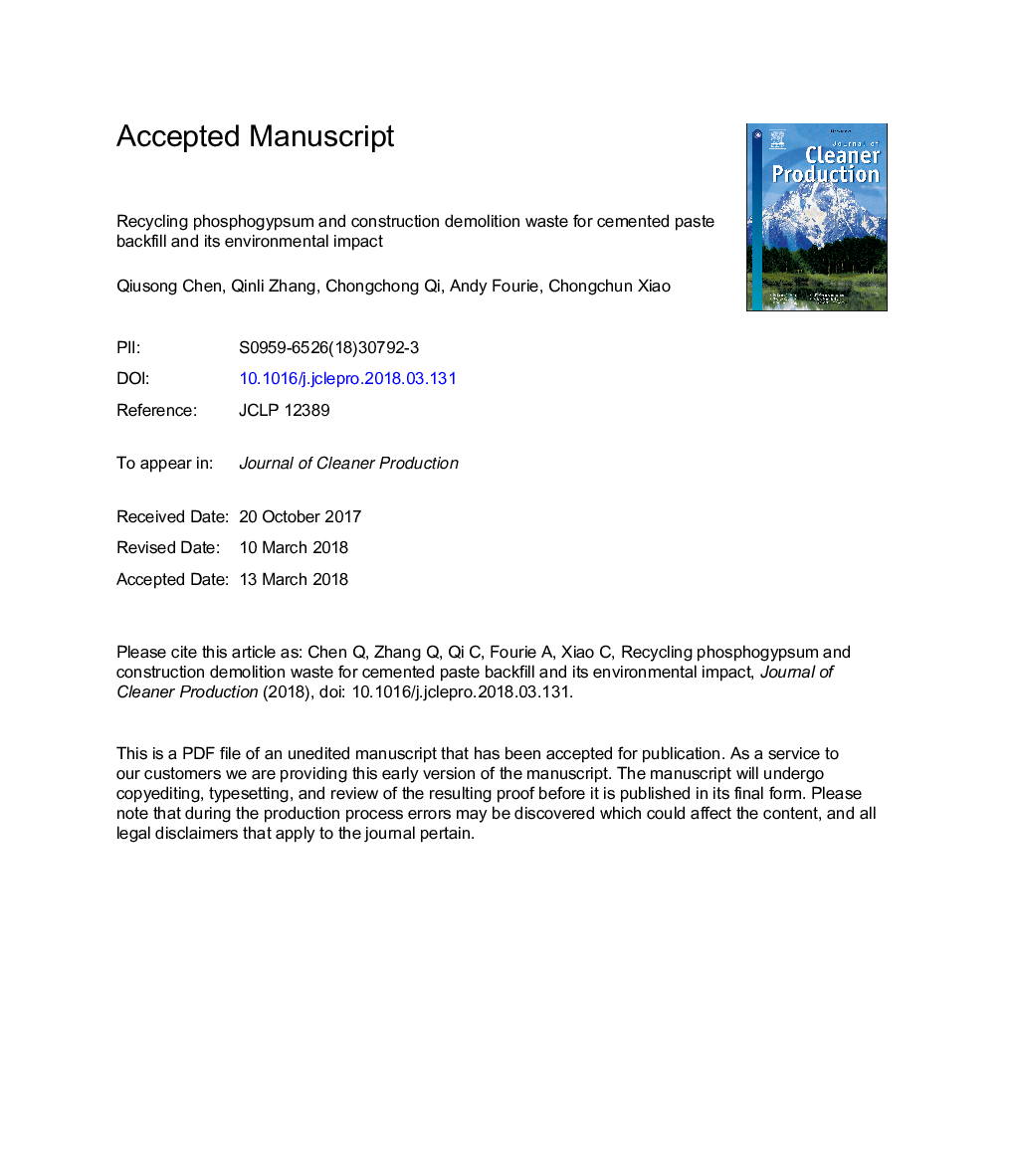| Article ID | Journal | Published Year | Pages | File Type |
|---|---|---|---|---|
| 8096200 | Journal of Cleaner Production | 2018 | 47 Pages |
Abstract
Solid waste management has become an important global issue, and the collection, recycling, and disposal of solid waste have great environmental impacts. This study investigates the feasibility of recycling two different solid wastes, phosphogypsum (PG) and construction demolition waste (CDW), as cemented paste backfill (CPB). The properties of the CPB were first demonstrated through a slump test, setting time detection and unconfined compressive strength (UCS) tests, and microstructural analysis. The environmental impact of the PG and CDW-based CPB was investigated through a static leaching experiment, a rotary acid leaching procedure, and index detection. A novel backfill system and process was also developed for engineering applications. The results show that (1) the solid concentration of CPB increased from 60â¯wt% to 70â¯wt% and the initial/final setting time decreased to 20-30% with the addition of CDW (from 0â¯wt% to 40â¯wt%); (2) the UCS of the CPB samples after 28 days of curing reached 1.74â¯MPaâ¯at 40â¯wt% CDW proportion, a cement/sand ratio of 1:6, and 70â¯wt% solid concentration; (3) the CPB samples had a high residual strength (80% of the UCS), indicating d and CDW-based CPB can support an underground stope after failure; and (4) the environmental indices for the bleed water and leachates of CPB satisfied the category III requirements of China's environmental standard (DZ/T 0290-2015). The results suggest that the proposed technology is a reliable and environmentally friendly alternative for recycling PG and CDW while simultaneously supporting safe mining.
Related Topics
Physical Sciences and Engineering
Energy
Renewable Energy, Sustainability and the Environment
Authors
Qiusong Chen, Qinli Zhang, Chongchong Qi, Andy Fourie, Chongchun Xiao,
